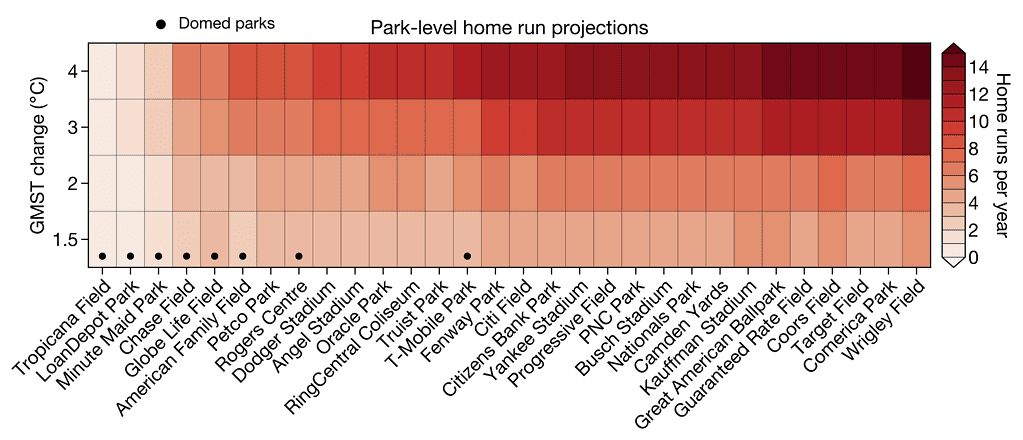Over the past decade, home run numbers in the Major League Baseball (MLB) in the US have climbed dramatically. Analysts have suggested many factors behind this surge, from improvements in game analytics to changes in baseball construction. However, a new study has found evidence for another reason – the rising global temperatures.

Researchers from Dartmouth College found that more than 500 home runs since 2010 can be attributed to the higher-than-average temperatures resulting from global warming. They analyzed thousands of MLB games and found a 1℃ increase in the daily high temperature on the day of a game increases the chances of home runs by 1.7%.
“We don’t think temperature is the dominant factor in the increase in home runs. That said, temperature matters and we’ve identified its effect,” Christopher Callahan, lead author of the new study, said in a statement. “While climate change has been a minor influence so far, this influence will substantially increase by the end of the century.”
It’s all about physics
Warm air is less dense than cooler air, the researchers explain. As the air heats up and molecules move faster, the air expands, leaving more space between molecules. As a result, a baseball should move farther on a warmer day than on a cooler one. This link has led to assumptions about the link between climate change and home runs.
In their study, the researchers found climate change led to an extra 58 home runs per year, and 577 home runs in total, between 2010 and 2019. This accounts for 1.1% of all home runs hit in that period. If greenhouse gas emissions continue unabated, that warming could account for 10% of all home runs by 2100, the researchers estimated.

“We asked whether there are more home runs on unseasonably warm days than on unseasonably cold days during the course of a season,” Callahan said. “We’re able to compare those days with the implicit assumption that the other factors affecting batter performance don’t vary day to day or are affected if a day is unseasonably warm or cold.”
The actual number of home runs due to temperature could be higher or lower depending on gameday conditions, the researchers said. For example, the Chicago Cubs’ open-air Wrigley Field would see the largest spike in home runs, while the Tampa Bay Rays’ domed Tropicana Field would remain at similar levels no matter how hot it is outside.
Night games could then reduce the influence of temperature on home runs, with covered stadiums capable of eliminating it, the paper suggests. While curbing the rise in home runs might seem counterproductive, there are other factors to consider as global temperatures rise, such as the exposure of the players and the fans to the hot weather.
Extreme heat is expected to become a bigger problem as global warming continues. Some baseball teams have already taken steps to mitigate the impacts of heat at their ballparks. The Texas Rangers, for example, opened a domed ballpark with a massive air conditioning system in 2020 to tackle the effects of the growing outdoor temperatures.
“This kind of study can be an entry point to understanding a phenomenon that is affecting the planet and every individual on it,” co-author Jeremy DaSilva said. “Baseball is one of these ways that American society holds a mirror up to itself and global climate change is just another example — baseball is not immune to it.”
The study was published in the journal American Meteorological Society.









